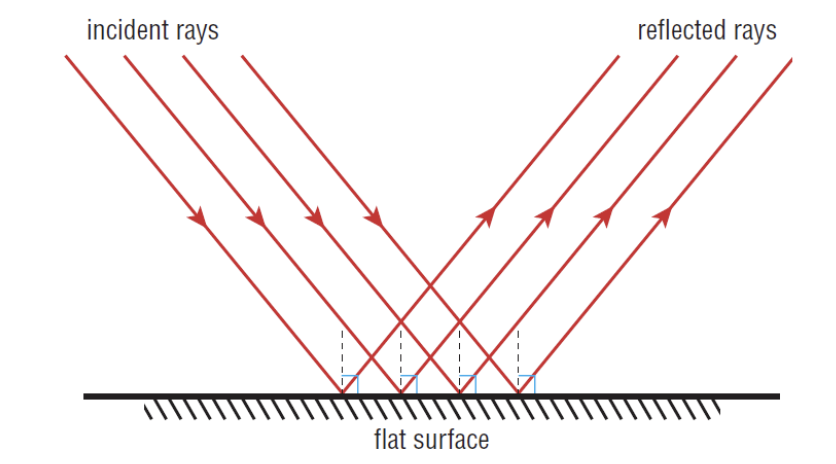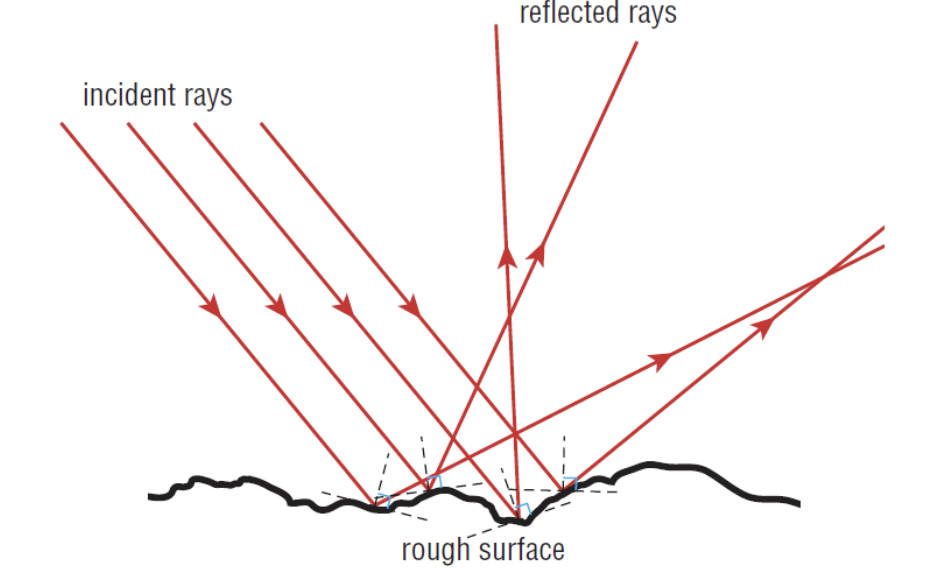Waves and Optics Vocabulary
1/74
Earn XP
Description and Tags
Flashcards covering key vocabulary and concepts from lecture notes on waves, light, and optics.
Name | Mastery | Learn | Test | Matching | Spaced |
|---|
No study sessions yet.
75 Terms
Oscillations
Periodic back and forth motion around a central point
Electromagnetic waves
Waves that can travel through empty space; examples include light, microwaves, and X-rays.
note: always transversive
Transverse wave
Waves in which the energy goes left and right, and oscillations are 90 degrees to the direction of wave propagation.
Direction of the wave is perpendicular to the direction of vibration of the particles
Longitudinal wave
Waves in which the oscillation/vibration of particles is along the wave propagation direction.
Waves that’s parallel to the direction of the vibration of the particles
Amplitude
Maximum displacement from equilibrium.
Wavelength
Distance from crest to crest.
Period (T)
Time to complete one cycle, measured in seconds.
Wave speed
How fast a wave moves through a medium.
Tension
How much force is pulling on a string.
Photons
Light is made up of…
Reflection
Light bouncing off of something.
Refraction
Light that bends or changes direction.
Incident ray
Ray coming in.
Reflected ray
Ray that’s reflected.
Plane mirror
Flat mirror.
Normal line
Straight line perpendicular from surface.
Specular reflection
Reflection off smooth surface where parallel rays remain parallel.
Diffuse reflection
Reflection off rough surface where rays come out at different angles.
Index of Refraction (n)
Ratio of the speed of light in a vacuum to its speed in a medium.
Wave
a disturbance or vibration that travels through a medium (like air, water, or a string)
How waves carry energy
vibrations in the particles of the medium they travel through (for mechanical waves) or by propagating disturbances in electric and magnetic fields (for electromagnetic waves)
Wave propagation
process of a disturbance traveling through a medium, carrying energy
Frequency (f)
number of wave crests passing a point, per x amount of time
how many complete waves pass in a given amount of time
Units: cycles / second, or Hertz (Hz)
Period
Time for complete wave to complete its cycle
Units: seconds
Mechanical wave
Have a material medium (matter)
—> needs a medium to travel through
Ex: Sound/water
Electromagnetic waves
medium is the electromagnetic field (which can exist in a vacuum, aka no space)
doesnt need a medium, can travel freely
Displacement - position/distance graphs
show wavelength
Displacement - time
shows period of a wave
Wave speed
As wave is the disturbance in a medium, this is the speed of disturbance.
Concept:
Waves can have different frequencies/wavelengths, …
but still move at same speed
Concept:
Higher frequency = …
shorter wavelength
Concept:
Lower frequency = …
longer wavelength
Light and Electromagnetic (transverse) Wave speed in empty space
3.00 x 108 m s-1
Mechanical Waves - medium: String, wave speed depends on . . .
Higher tension → faster speed
Mechanical Waves - medium: Fluid, wave speed depends on . . .
Density, viscosity
Mechanical Waves - medium: Sound, wave speed depends on . . .
air pressure, temperature, density
Usually around 340 - 350 ms-1 under normal conditions in air.
Faster in denser media
Concept:
Sound travels faster in denser mediums because
molecules are packed closer together so when a particle within the medium vibrates, it transfer its energy more efficiently from one particle to the next as they are closely packed
Concept
Regions of higher pressure =
more particles = high density
Compression
when the longitudinal wave is compressed - has more density
Concept
Regions of lower pressure =
fewer particles = lower density
Rarefaction
when longitudinal wave is stretched, not compressed, less density.
Diffraction
the spreading out of a wave
EM Radiation
oscillating electric and magnetic fields,
doesn’t need medium
High frequency EM waves has
more energy
Low frequency EM waves carry
less energy
Reflection
light bouncing off of something
The ray-wave connection
Rays show the direction in which waves travel
When using rays, we typically ignore wave aspects
Light rays
travel in straight lines from their source, cross one another but doesnt interact, travels forever
Concept:
At an interface (new material), light can be
reflected or refracted (path bends)
A denser medium tends to
slow down the wave (mechanical, except sound) because there are more particles the wave has to move through. Hence, the wave has to do more work to displace the particles, slowing down its speed.
Plane Mirror
Flat mirror
Incident Ray
Ray that’s coming in
Reflected Ray
Ray that has bounced off the surface, going out
Angle of Incidence
Angle between the incident ray and normal line
Angle of Reflection
Angle between the reflected ray and the normal line
Concept - Laws of reflection
The angle of incidence
equals the angle of reflection
Concept - Laws of reflection
The incident ray, the reflected ray, and the normal all
lie in the same plane (same 2-D plane).
Specular Reflection
Reflection from a flat reflective surface.
—> The angles of incidence for these rays are all identical.
Angles of reflection are equal
If incident rays are parallel, then the reflected rays will also be parallel

Diffuse Reflection
Occurs on surfaces with irregularities/rough/not flat
Normal lines are in different directions
Incident rays all have different angles of incidence.
Reflected rays travel in different directions
—> can’t see your reflection because reflected rays are reflecting in many different directions

Refraction
change in direction of a light ray when it travels through a medium
—> the ray that’s leaving is not reflective with the incidence ray
Causes of refraction
Light rays refract when passing from one medium to another, because of the change in speed.
what causes change in speed: density of new medium
Wavelength changes, but frequency is not changed. (bc frequency doesn’t change)
Frequency (f) generally remains
unchanged. The frequency is determined by the source of the wave.
Concept:
Light rays that slow down will
bend towards the normal. Decrease in wavelength.
Concept:
Light rays that speed up will
bend away from the normal. Increase in wavelength.
Index of Refraction (for a medium)
the ratio of speed of light in empty space, to the speed in that particular medium.
n=c/v
Index of refraction will always be greater than or equal to 1
no units
Concept:
The higher the refractive index
the slower the light travels
Substances with a higher index of refraction mean
they are more optically dense. Therefore light will have lower speed in these mediums.

n1 and n2 represents:
index of refraction in medium 1 and 2
Total internal refraction
Light at a boundary is completely reflected, and none is refracted.
from denser medium to less dense medium
When it happens: typically at 50-60o
Light speeds up at the boundary
Concept:
As the incident angle increases
The angle of refraction also increases
critical angle
the specific angle of incidence at which the angle of refraction is 90 degrees. Beyond this angle, total internal reflection occurs
Concept
At angles greater than the critical angle, we have
total internal reflection.
Concept: To calculate critical angle
Use Snell’s law, with refracted angle θ2 = 90o
In this case we call the incident angle the critical angle
Apparent depth
Illusion that makes an object submerged in water appear shallower than its actual depth when viewed from above
Concept:
Apparent depth is due to
the increase in light speed when light rays travel from a dense medium to a less dense medium. as this happens, the light will bend (aka, refract), causing it to appear to come from a position closer to the surface